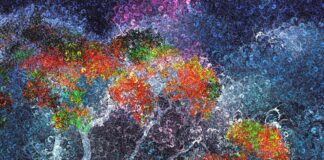Notion is a versatile and popular productivity tool that combines note-taking, project management, collaboration, and knowledge management into a unified platform. Launched in 2016, Notion has gained widespread adoption for its flexibility and user-friendly interface. Here, we’ll delve into ten important aspects related to Notion:
1. All-in-One Workspace: Notion serves as an all-encompassing workspace that consolidates various productivity tools into a single platform. Users can create notes, documents, databases, task lists, and more within the same interface. This integration eliminates the need for multiple apps, providing a centralized hub for personal and collaborative work.
2. Blocks-Based Editing: Notion employs a blocks-based editing system, allowing users to create content using modular blocks. These blocks can represent different types of content, such as text, headers, images, to-do lists, databases, and more. This modular approach makes it easy to structure and organize information in a visually intuitive manner.
3. Collaborative Features: Collaboration is a core strength of Notion. Multiple users can work on the same document or database simultaneously, making it ideal for team collaboration. Notion allows real-time editing, commenting, and sharing, fostering seamless teamwork and knowledge sharing within organizations.
4. Flexible Database System: Notion’s database functionality enables users to create structured databases with customizable properties. These databases can be used for project management, task tracking, content organization, and more. The flexibility of the database system makes it adaptable to various workflows and use cases.
5. Task and Project Management: Notion excels as a task and project management tool. Users can create to-do lists, kanban boards, and project timelines, all within the same workspace. The ability to link tasks to databases and other related content enhances task organization and project tracking.
6. Customization and Personalization: Notion offers a high degree of customization, allowing users to tailor their workspace to meet specific preferences and needs. This includes choosing different themes, modifying the layout, and creating templates for recurring use cases. Notion’s emphasis on personalization enhances user experience and workflow efficiency.
7. Knowledge Management: With its ability to handle diverse types of content and data, Notion serves as a robust knowledge management tool. Users can create a comprehensive knowledge base, store research notes, and build a repository of information. The interconnected nature of content in Notion facilitates cross-referencing and easy navigation.
8. Cross-Platform Compatibility: Notion is designed to be accessible across various platforms, including web browsers, desktop applications (Windows and macOS), and mobile apps (iOS and Android). The seamless synchronization ensures that users can access and update their content from any device, promoting flexibility and on-the-go productivity.
9. Third-Party Integrations: While Notion is feature-rich on its own, it also integrates with various third-party apps and services to enhance its functionality. Integrations with tools like Google Drive, Trello, Slack, and others allow users to connect their existing workflows and bring external content into Notion seamlessly.
10. Freemium Model: Notion operates on a freemium model, offering a free plan with essential features and premium plans with advanced capabilities. The free plan provides ample functionality for personal use and small teams, making Notion accessible to a broad user base. The premium plans unlock additional features, such as advanced permissions, version history, and increased file upload limits.
Notion’s strength lies in its ability to provide users with a unified and cohesive environment for their work. The blocks-based editing system, with its modular approach, offers a level of flexibility that is crucial for organizing information in a way that aligns with individual preferences and work requirements. Whether users are creating a simple to-do list or a complex project management database, the blocks system allows for easy customization and structuring of content.
Collaboration is a central tenet of Notion’s design. The platform’s collaborative features empower teams to work seamlessly together in real-time. Multiple team members can contribute to a document simultaneously, fostering a sense of shared ownership and productivity. The ability to comment, discuss, and provide feedback directly within the workspace enhances communication, making Notion a valuable tool for both remote and in-person collaboration.
The flexibility of Notion’s database system is a notable aspect, allowing users to design databases that suit their specific needs. This adaptability is particularly beneficial for project management, as users can create databases for tasks, projects, or any other type of structured data. The interconnectedness of databases with other content in Notion enhances the platform’s utility for organizing and managing information.
Task and project management in Notion benefit from its comprehensive suite of tools. Users can create to-do lists, kanban boards, and timelines, providing a holistic view of their tasks and projects. The ability to link tasks to databases, notes, or other related content streamlines project tracking and ensures that information is interconnected, avoiding silos in data and context.
Notion’s emphasis on customization and personalization allows users to tailor their workspace according to their preferences. Themes, layouts, and templates can be modified to create a workspace that aligns with individual workflows. This focus on user experience contributes to a more intuitive and personalized working environment.
As a knowledge management tool, Notion’s capabilities extend beyond simple note-taking. Its ability to handle diverse content types, from text to images and files, makes it a powerful repository for knowledge. Users can create a comprehensive knowledge base, facilitating information retrieval and cross-referencing. The interconnected nature of content within Notion supports the creation of a dynamic and organized knowledge repository.
Notion’s cross-platform compatibility ensures that users can seamlessly transition between devices. Whether accessing Notion from a web browser, desktop application, or mobile app, the synchronization of content allows users to stay productive regardless of their location or device. This adaptability contributes to the platform’s versatility and accessibility.
Third-party integrations further enhance Notion’s functionality by allowing users to connect their workflows and bring external content into the platform. Integrations with popular tools like Google Drive, Trello, and Slack enable a seamless flow of information between Notion and other applications, fostering a more integrated and connected work environment.
The freemium model adopted by Notion makes the platform accessible to a wide range of users. The free plan provides essential features for personal use and small teams, while premium plans offer additional functionalities for those seeking advanced capabilities. This tiered approach ensures that Notion can cater to various user needs, from individuals looking for a personal productivity tool to organizations requiring advanced collaboration and administrative features.
In conclusion, Notion has emerged as a comprehensive and flexible productivity platform, catering to the needs of individuals, teams, and organizations. Its all-in-one approach, blocks-based editing, collaborative features, and adaptability to various use cases make it a versatile tool for note-taking, project management, and knowledge management. With a commitment to continuous improvement and user satisfaction, Notion remains a prominent player in the evolving landscape of productivity tools.














